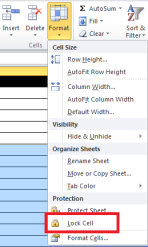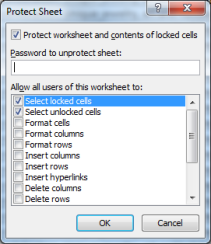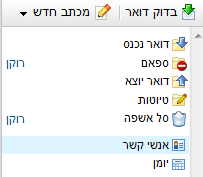I did a job that scribe data from web site and put it in MSSQL.
I wrote it in python using pyodbc.
But I discovered writing multiple record to MSSQL server using pyodbc is very slow
So after some digging in I found a way to make it much faster.
And here are the results:
Running 100 inserts
To save to DB myway 0:00:00.166000
To save to DB execute 0:00:07.265000
To save to DB executemany 0:00:14.173000
Running 2000 inserts (Azure DB)
To save to DB myway 0:00:01.194000
To save to DB execute 0:02:24.632000
To save to DB executemany 0:04:48.415000
Running 2000 inserts (LAN DB)
To save to DB myway 0:00:00.524000
To save to DB execute 0:00:17.183000
To save to DB executemany 0:00:31.523000
So how did I do it?
I created my own lib called MSSQL.py
import pyodbc
# MSQL functions Version 0.5
import datetime
#CONNECTION_STRING = "DRIVER={SQL Server};SERVER=localhost;DATABASE=master"
def CreateCursor(CONNECTION_STRING):
return pyodbc.connect(CONNECTION_STRING).cursor()
"""
# samples
cursor.execute("select top 10 * from stocks")
rows = cursor.fetchall()
for row in rows:
print row.TickerSymbol, row.Company
cursor.close()
"""
def encapsulate(value):
#Encapsulate the input for SQL use (add ' etc)
if isinstance(value, list):
r = []
for i in value:
if isinstance(i, basestring):
r.append(encapsulate(i))
else:
r.append(str(encapsulate(i)))
return ','.join(r)
elif isinstance(value, str):
return "'" + value.replace("'", "''") + "'"
elif isinstance(value, unicode):
return "N'" + value.replace("'", "''") + "'"
elif isinstance(value, datetime.datetime) or isinstance(value, datetime.date):
return "'" + value.isoformat() + "'"
elif value is None:
return "Null"
else:
return str(value)
#cursor,user.fbid,user.name,user.age,user.gender,user.device,user.platform,DeviceTypesDic, platformTypesDic
def enlist(rows):
#Takes a list of items and make them in format for SQL insert
#limit of 1000 lines
clLists = []
cl = []
LineCounter = 0
for i in rows:
if LineCounter >= 1000:
clLists.append(",".join(cl))
cl = []
LineCounter = 0
cl.append("(" + encapsulate(i) + ")")
LineCounter += 1
clLists.append(",".join(cl))
return clLists
def CreateDicForTable(table, cursor):
cursor.execute("select * from %s" % table)
rows = cursor.fetchall()
dic = {}
for row in rows:
dic[row[1]] = row[0]
return dic
def RefeshDicForTable(table, TableDic, NewItemsList, cursor):
#Gets table dictionary and new items rows, add the new items to the DB and update the Dict with new keys
cursor.execute("select isnull(max(%sID),0) as MaxID from %s" % (table[:-1], table))
maxID = cursor.fetchone()[0]
for NewItems in enlist(NewItemsList):
cursor.execute("Insert into %s (Name) Values " % table + NewItems)
cursor.commit()
cursor.execute("select * from %s where %sID > %d" % (table, table[:-1], maxID))
rows = cursor.fetchall()
dic = TableDic
for row in rows:
dic[row[1]] = row[0]
return dic
def Dic2List(ListofDicts):
if len(ListofDicts) > 0:
fields = ListofDicts[0].keys()
ll = []
for dic in ListofDicts:
dictlist = []
for key, value in dic.iteritems():
dictlist.append(value)
ll.append(dictlist)
else:
fields = []
ll = []
return (fields, ll)
def enfields(fields):
tempfields = []
for field in fields:
tempfields.append('[%s]' % field)
return "(" + ",".join(tempfields) + ")"
def insertListDic(ListofDicts, table_name, fieldsOverRide, cursor):
# must get only one table
(fields, datas) = Dic2List(ListofDicts)
if fieldsOverRide != "" and fieldsOverRide is not None:
fields = fieldsOverRide
for data in enlist(datas):
# print ("Insert into %s %s Values %s" % (table_name, enfields(fields), data))
cursor.execute("Insert into %s %s Values %s" % (table_name, enfields(fields), data))
cursor.commit()
def CreateDicForTypesTable(table,cursor):
cursor.execute("select * from %s"%table)
rows = cursor.fetchall()
dic = {}
for row in rows:
dic[row[1]] = row[0]
return dic
def updateTypeDic(TypeDic,table_name,CodeName,dataset,cursor):
if len(dataset) >0:
dataset -= set(TypeDic)
if len(dataset) >0:
cursor.execute("select isnull(max(%s),0) as MaxID from %s" % (CodeName, table_name))
maxID = cursor.fetchone()[0]
for data in enlist(dataset):
cursor.execute("Insert into %s (Name) Values %s" % (table_name ,data))
cursor.commit()
cursor.execute("select * from %s where %s > %d" % (table_name, CodeName, maxID))
rows = cursor.fetchall()
for row in rows:
TypeDic[row[1]] = row[0]
return TypeDic
def writetoDB(datalist, table_name, fieldsnames, cursor):
for data in enlist(datalist):
cursor.execute("Insert into %s %s Values %s" % (table_name, enfields(fieldsnames), data))
cursor.commit()
To test it create table
create table test (c50 varchar (50) , C15 varchar(15))
and use TestSQLSpeed.py
from MSSQL import *
import datetime
import time
Server = 'myserver'
User = 'username'
Password = 'password'
DatabaseName = 'TestDB'
CONNECTION_STRING = "DRIVER={SQL Server};SERVER=%s;UID=%s;Database=%s;PWD=%s" % (Server, User, DatabaseName, Password)
#CONNECTION_STRING = "DRIVER={SQL Server};SERVER=localhost;DATABASE=master"
#print CONNECTION_STRING
cursor = CreateCursor(CONNECTION_STRING)
def timepassed(started,message):
print message, datetime.datetime.fromtimestamp(time.time())-started
return datetime.datetime.fromtimestamp(time.time())
started = datetime.datetime.fromtimestamp(time.time())
started = timepassed(started, 'toget cursor')
r=[]
for i in range(2000):
r.append(['hello%d'%i,'2this is a test'])
started = timepassed(started, 'To build list')
for data in enlist(r):
cursor.execute("Insert into test (c50,c15) Values " + data)
cursor.commit()
started = timepassed(started, 'To save to DB myway')
for data in r:
cursor.execute("Insert into test (c50,c15) Values ('%s','%s')" % (data[0],data[1]))
cursor.commit()
started = timepassed(started, 'To save to DB execut')
cursor.executemany("insert into test (c50,c15) Values (?, ?)", r)
cursor.commit()
started = timepassed(started, 'To save to DB executemany')
cursor.close()
Point proven 🙂
















